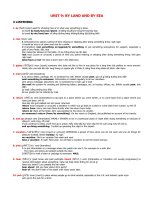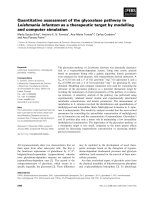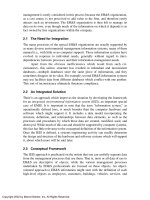Unit 24: Program design and computer languages pot
Bạn đang xem bản rút gọn của tài liệu. Xem và tải ngay bản đầy đủ của tài liệu tại đây (946.29 KB, 1 trang )
Unit 24 Program design and
computer languages
Name:
1 Decide if the following words collocate with code or language. Choose the correct answer.
1 low-level
code
language
2 machine
code
language
3 object
code
language
4 high-level
code
language
5 programming
code
language
6 markup
code
language
7 source
code
language
8 assembly
code
language
Now listen to the collocations and practise saying them.
2 Complete the definitions from an online dictionary by typing in terms from Exercise 1. Then
choose the correct verb forms from the drop-down menu.
1
: general term for a formal language used
instructions that can
translated into machine language and then executed
by a computer.
2
: a set of instructions that a computer can
directly; it is expressed in binary code and is very difficult
.
3
: a type of low-level language that uses abbreviations such as ADD, SUB and
MPY
instructions; then translated into machine code using an assembler.
4
: a language such as an assembly language, which does not
a compiler or interpreter.
5
: developed
programs easier
; for example, FORTRAN, BASIC, C and Java.
6
: the original work of a programmer, which must
translated by a compiler.
7
: instructions that a compiler
from source code
written in a higher-level language, for example C++.
8
: a language for
web documents.
3 Complete these steps in the writing of a program by typing in the words from the box.
debug documentation flowchart problem compile instructions
1 Understand the and plan a solution.
2 Make a
, which shows the steps of the program.
3 Write in a programming language.
4 the program – that is, turn it into machine code.
5 Test for errors and the program.
6 Prepare
, for example the instruction manual.
HELP?HELP?
HELP?HELP?









